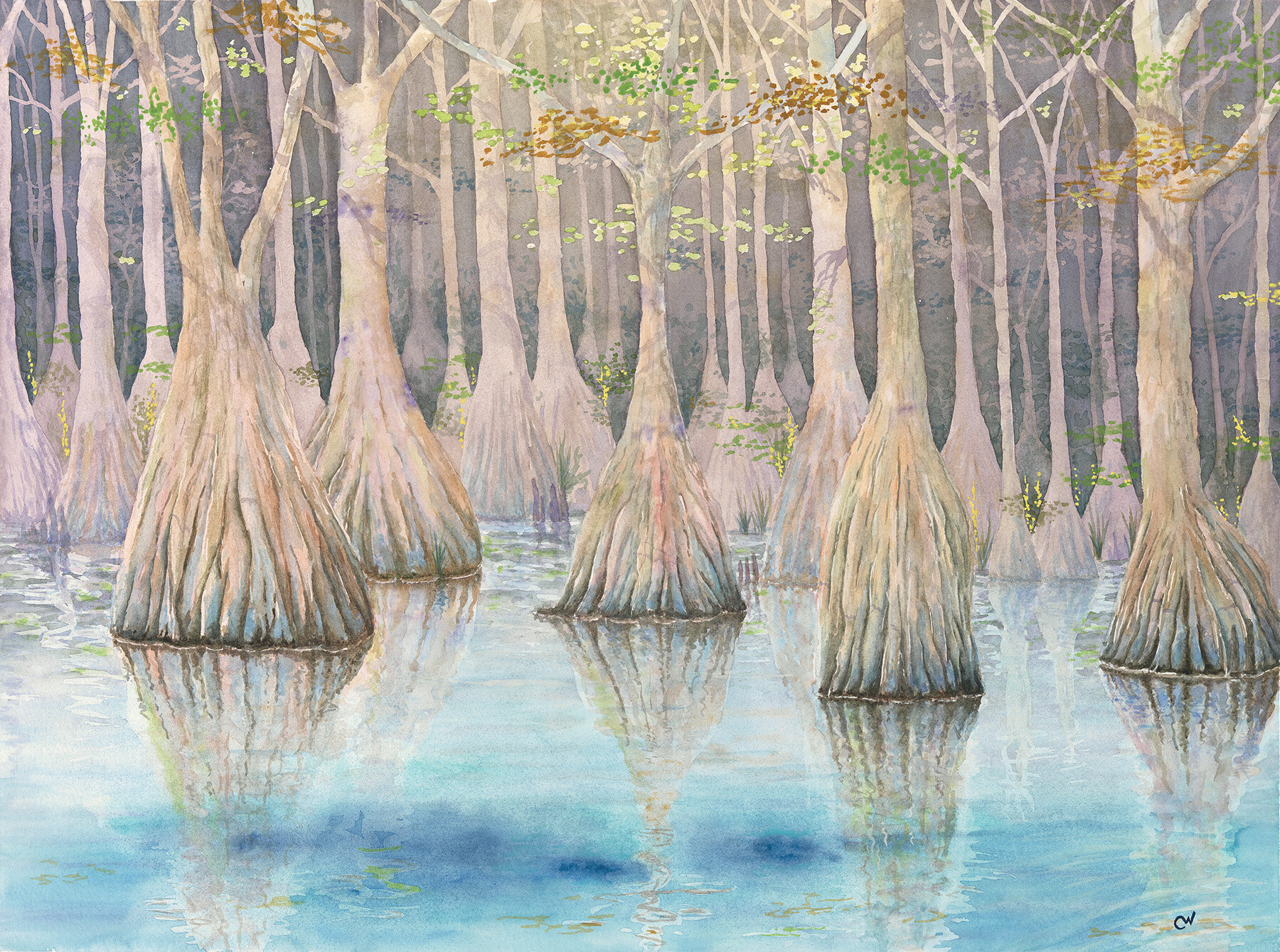Cathedrals of Life
When we hear the term “swamp” we usually have visions of places that are dark or scary. Places one wouldn’t want to visit. The reality of these amazing ecosystems couldn’t be farther from this misconception. In this month’s blog we are going to explore a specific type of swamp found in Florida and focus on the rock star tree that dominates the landscape. I think you’ll find out why these places are so fascinating, ecologically essential, and deeply moving cathedrals that are worth protecting.
Massive Cypress trees along the Santa Fe River. You can see the buttress pattern of the trunk from consistent immersion in water. Due to logging, trees this size are rare.
Swamps are defined as wetlands that have trees. A wetland is a place that is immersed in water during all or part of the time. The trees that dominate the areas we call “swamps” have some fascinating adaptations that allow them to cope with water immersion. Let’s explore a specific type of swamp and the tree that dominates the landscape.
“Cypress Wonderland” watercolor 16x20
Interior Swamps
Interior swamps or fresh water swamps can be found along river shores and flood plains, in ponds, along lake shores, and bottom lands. The water that rises and falls in these areas creates and environment that only allows plants that can handle being totally immersed under water during all or part of the time to thrive. Florida is covered with many many square miles of wetlands. They are one of the most important and biologically rich ecosystems in the state. While these places house a massive variety of life, one of the most dominant and interesting trees in interior swamps is the great Bald Cypress Tree.
while Cypress trees can grow on high land that never floods, they are met with competition from other plants in these areas. They are adapted to grow in areas where their trunks are completely underwater for months at a time. These trees are masterpieces of biological architecture. The base of the trunk swells into a buttress that supports the massive weight of the tree as it grows in muddy, unstable soils. Their root systems adapt to high water by sprouting “adventitious” roots that grow above the water’s surface therefore allowing the roots to obtain oxygen. The growth of the Cypress “knees” may also help in delivering oxygen.
“Chipola” watercolor 9x12 This painting illustrates the Cypress knees sprouting up along the wet banks of this beautiful spring.
Another way that Cypress trees become adapted to wetlands are their reproductive cycles. In the fall season, the trees go dormant which reduces their needs for oxygen. When wintertime flood waters rise,this helps them with their roots’ oxygen demands. Cypress are one of the only conifers to lose their leaves. They turn a gorgeous rusty orange color in the fall/winter before dropping to the forest floor creating a carpet of Cypress leaf mulch. During this dormant time, the cones on the tree remain closed. In the spring, the cones open and seeds disperse during a time when the waters are usually receding. This allows the seeds to take hold in the fertile leaf mulch which keeps the soil moist. While conditions need to be just right for young Cypress saplings to survive, the trees create an abundance of seeds which increase their odds of reproducing successfully.
While fire is a rare occurrence in a Cypress swamp, the trees have some amazing adaptations that allow them to keep going after a fire. They can sprout new branches from a burned out or even a cut trunk! They are also insect and fungus resistant making them able survive for hundreds or even up to 1,000 years! Old growth Cypress trees can be up to 100-150 feet tall with an impressively massive trunk circumference.
Paddling or hiking through a Cypress swamp is a deeply moving experience. These trees were one of the first trees to colonize Florida after sea levels fell and it became dry land. These ancient sentinels have stories to tell and lessons to teach us about being adaptive and standing strongly rooted in a shifting world.
“Itchetucknee Confluence” 18x24 watercolor. The clear water of the spring fed Ichetucknee River meets up with the Santa Fe river. It’s flooded banks host a magnificent Cypress swamp.
Stay tuned to this page for more fun and fascinating news and facts about our natural world and don't forget that we support local environmental organizations working to protect the most vulnerable ecosystems and organisms. A percentage of all sales of artwork goes to the Florida Springs Institute and the Florida Springs Council
Shop for my original artwork, prints, and more here
Stay inspired!
Curtis Whitwam



